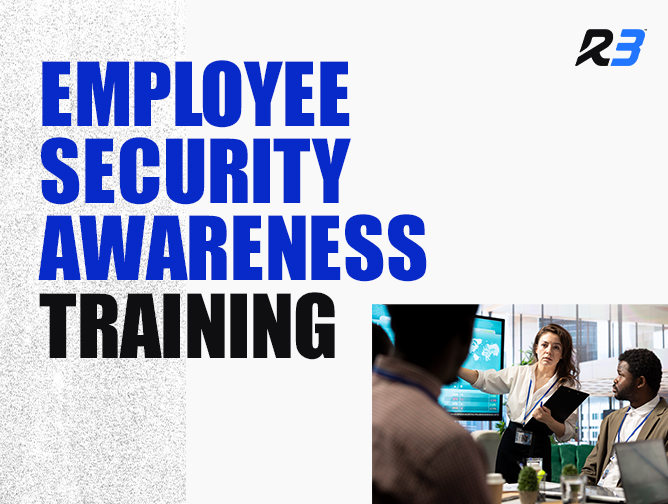Why Your Team Needs it Now, More Than Ever:
A strong cybersecurity strategy relies on two factors: the software/tools used, and the people using them. More often than not, a breach occurs via the latter option. In fact, recent studies have shown that nearly 95% of all breaches are the result of some sort of human related error. Essentially, the age-old adage “you’re only as strong as your weakest link” rings true in relation to all things cybersecurity.
When it comes to protecting your data, all employees—at every level, on every team, in every age bracket—need to be trained on the cybersecurity best practices and standards put into place by your IT department. But with so many personalities, technical skill levels, attention spans, learning preferences, and other variables, how do you train your workforce effectively?
Here are R-3 IT’s 10 best practices for security awareness training in your organization.
10 Security Awareness Best Practices
- Bake it into your company culture
Cybersecurity and data protection needs to be at the heart of what you do and baked into the culture of your organization. A breach in data can, at worst, prove fatal to some businesses and, at best, be a PR, financial, and customer service nightmare. Therefore, ensure your company culture doesn’t let that happen! - Train, train, train
One way to create a company culture that prioritizes data protection is to train new employees on the importance of security measures, including MFA and Zero Trust policies. By having this type of training alongside other position-based or skills training, new hires will understand how important security is to your organization off the bat. - Establish expectations early
The best way to develop a strong culture of cybersecurity is to instill best practices from day one. In addition to your company having an onboarding process that includes a thorough educational module on anything and everything cybersecurity related, you should also require that those new employees be quizzed for their retention of those modules later on. - Reinforce often
It’s not just new employees that need to be trained. Over time, we all get lazy or forgetful at some juncture and those once-in-a-while lapses in judgement at the wrong place or time can prove to be devastating. Have refresher courses ready and required 2-4 times throughout the year. - Keep software up to date
Ensure employees are consistently keeping their software up-to-date. While your in-house or partner IT team will handle the major software upgrades and overhauls, your employees may still be prompted to update apps and software on their own computers from time to time. Make sure they don’t dismiss update reminders, but that they do them as soon as possible! This can keep potential breaches from happening. - Be prepared for a breach
Even when you do everything right, a breach can still happen. Your team needs to have company-wide plans for every scenario in writing and accessible to all employees. This way, if something goes awry, an employee knows exactly who to contact so that the damage can be minimized.
In order to have your organization be prepared for breaches, your employees need to be prepared first. Make sure everyone is on board with your security measures in order to keep proprietary information—both the business’s, the client’s, and their own—safe, secure, and out of the hands of cyber criminals!
Learn more about our Security Awareness Training services.
Download 6 Common Cyber Attacks & How to Prevent Them
Your guide to better understanding the six most common cyber attacks that face your organization, what to do to prevent them, and what to do in case of a breach. We’ve also included over 10 case studies for you to explore!





